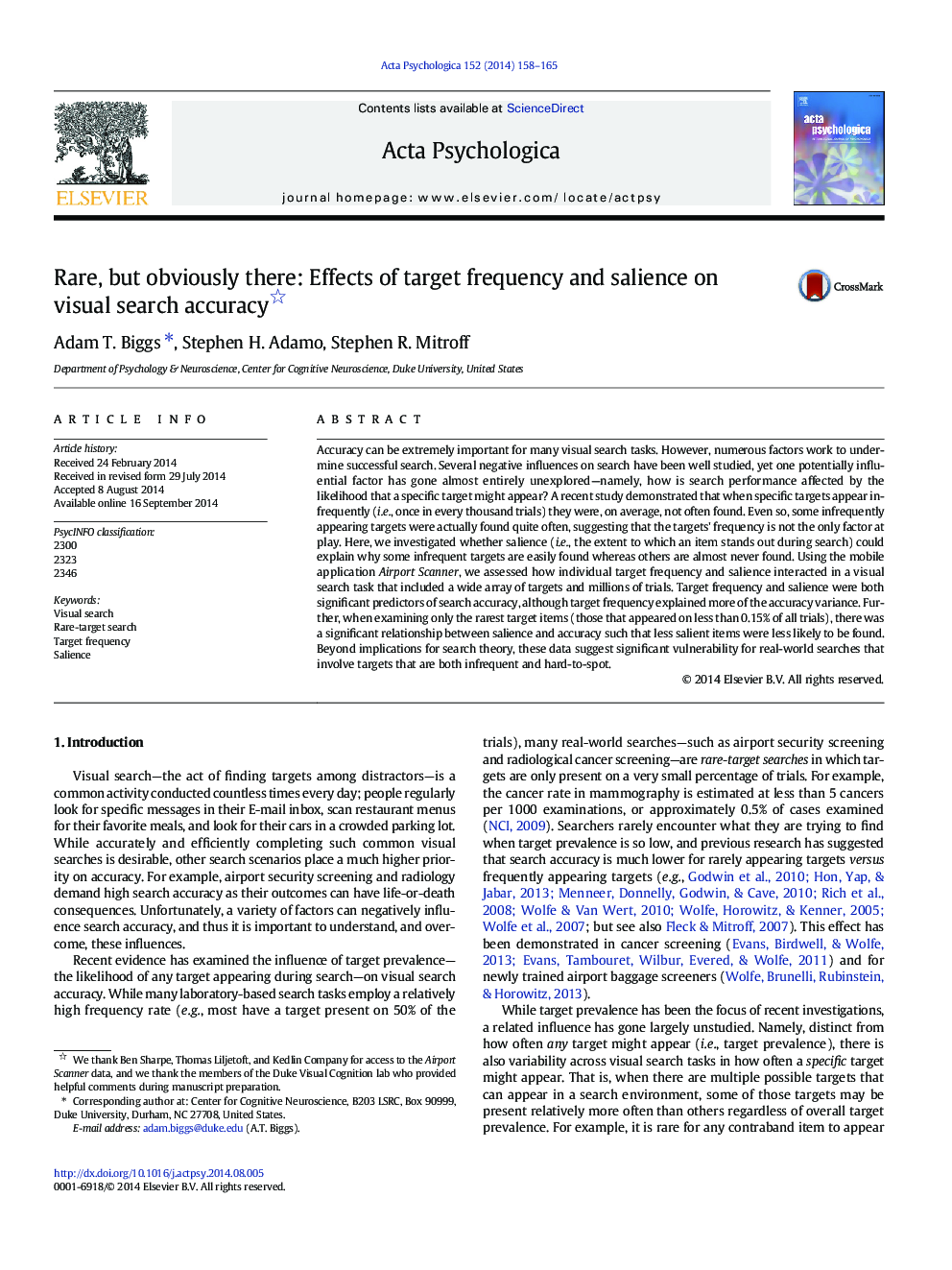| Article ID | Journal | Published Year | Pages | File Type |
|---|---|---|---|---|
| 919796 | Acta Psychologica | 2014 | 8 Pages |
•We compared how target frequency and salience affected visual search accuracy.•The task included 79 unique target types and millions of visual search trials.•Both target frequency and salience explained independent portions of accuracy.•Target salience could explain why some ultra-rare targets were found often.
Accuracy can be extremely important for many visual search tasks. However, numerous factors work to undermine successful search. Several negative influences on search have been well studied, yet one potentially influential factor has gone almost entirely unexplored—namely, how is search performance affected by the likelihood that a specific target might appear? A recent study demonstrated that when specific targets appear infrequently (i.e., once in every thousand trials) they were, on average, not often found. Even so, some infrequently appearing targets were actually found quite often, suggesting that the targets' frequency is not the only factor at play. Here, we investigated whether salience (i.e., the extent to which an item stands out during search) could explain why some infrequent targets are easily found whereas others are almost never found. Using the mobile application Airport Scanner, we assessed how individual target frequency and salience interacted in a visual search task that included a wide array of targets and millions of trials. Target frequency and salience were both significant predictors of search accuracy, although target frequency explained more of the accuracy variance. Further, when examining only the rarest target items (those that appeared on less than 0.15% of all trials), there was a significant relationship between salience and accuracy such that less salient items were less likely to be found. Beyond implications for search theory, these data suggest significant vulnerability for real-world searches that involve targets that are both infrequent and hard-to-spot.
